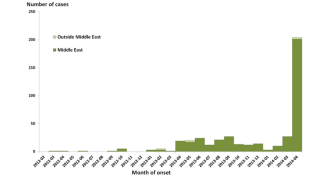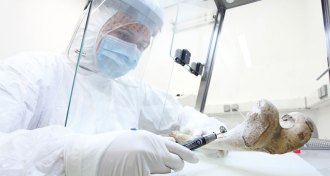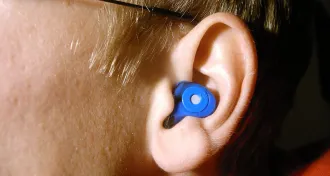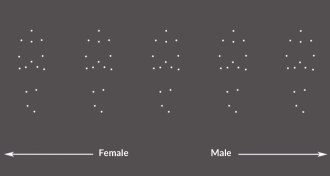Humans
Sign up for our newsletter
We summarize the week's scientific breakthroughs every Thursday.
-
 Health & Medicine
Health & MedicineU.S. patient with MERS virus is on the mend
A man in Indiana does not seem to have spread the potentially deadly respiratory illness.
-
 Health & Medicine
Health & MedicineMassachusetts insurance mandate lowers death rate
Since “Romneycare” was phased in, mortality fell by 2.9 percent.
By Nathan Seppa -
 Health & Medicine
Health & MedicineMom’s nutrition puts a stamp on baby’s DNA
A new study is the latest in a growing list of how the environment sculpts a person’s epigenome.
-
 Health & Medicine
Health & MedicineMERS outbreak picks up pace in Middle East
As the number of MERS cases increases, researchers race to learn more about the deadly virus carried by camels.
-
 Health & Medicine
Health & MedicineFirst MERS case found in the U.S.
Patient in Indiana had traveled from Arabian Peninsula, where most of the 463 cases of Middle Eastern Respiratory Syndrome have occurred.
-

-
 Archaeology
ArchaeologyWritten in bone
Researchers are reconstructing the migrations that carried agriculture into Europe by analyzing DNA from the skeletons of early farmers and the people they displaced.
-
 Psychology
PsychologyBasketball players richly rewarded for selfishness in playoffs
Future paychecks trip up teamwork in NBA championship tournament.
By Bruce Bower -
 Health & Medicine
Health & MedicineMusicians have elevated risk of hearing loss
Compared to the general public, professional musicians' risk of hearing loss and ringing in the ears is higher, a new study shows.
-
 Science & Society
Science & SocietyAnti-leukemia vaccine reported hope of future
Fifty years ago, Science News Letter reported on the promise of a vaccine to prevent leukemia. No preventive vaccine has come to pass, but leukemia vaccines as treatments has yielded promising results.
-
 Neuroscience
NeuroscienceHumans can sniff out gender
A new study adds to controversy of whether people have pheromones.
By Meghan Rosen -
 Psychology
PsychologyLeonardo da Vinci may have invented 3-D image with ‘Mona Lisa’
A mysterious copy of the ‘Mona Lisa’ combines with the Louvre painting to make a stereoscopic image of the woman with the enigmatic smile.